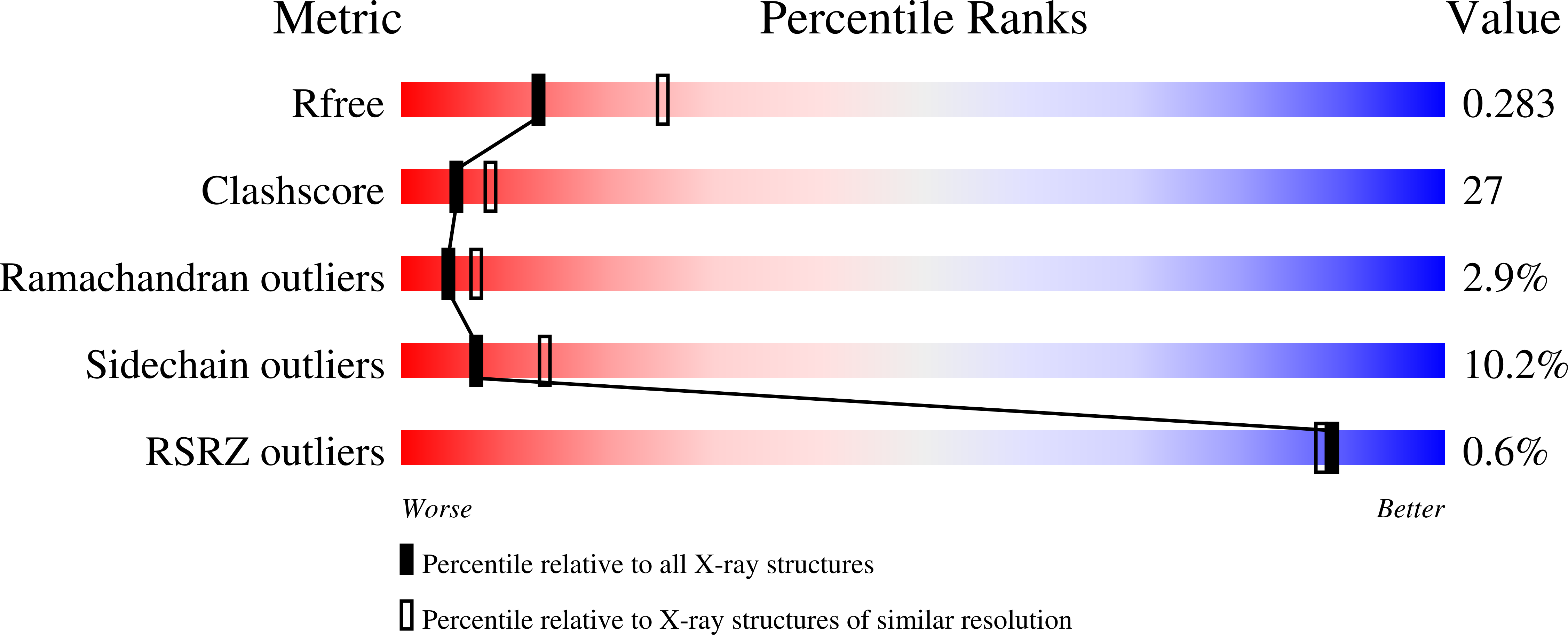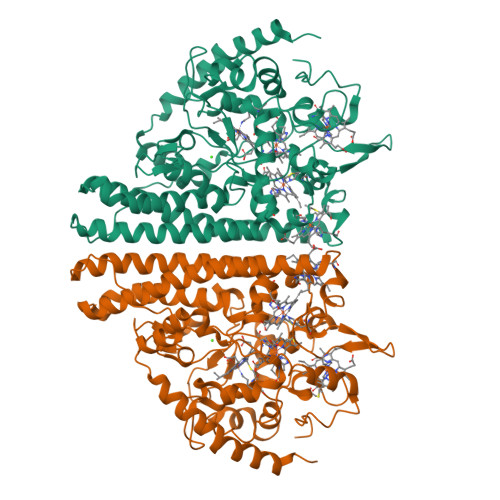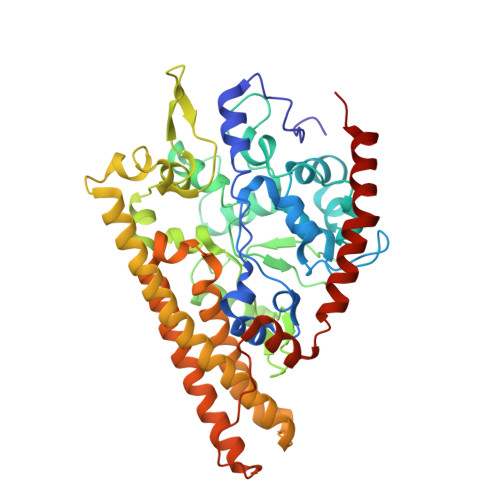Laue crystal structure of Shewanella oneidensis cytochrome c nitrite reductase from a high-yield expression system.
Youngblut, M., Judd, E.T., Srajer, V., Sayyed, B., Goelzer, T., Elliott, S.J., Schmidt, M., Pacheco, A.A.(2012) J Biol Inorg Chem 17: 647-662
- PubMed: 22382353
- DOI: https://doi.org/10.1007/s00775-012-0885-0
- Primary Citation of Related Structures:
3UBR - PubMed Abstract:
The high-yield expression and purification of Shewanella oneidensis cytochrome c nitrite reductase (ccNiR) and its characterization by a variety of methods, notably Laue crystallography, are reported. A key component of the expression system is an artificial ccNiR gene in which the N-terminal signal peptide from the highly expressed S. oneidensis protein "small tetraheme c" replaces the wild-type signal peptide. This gene, inserted into the plasmid pHSG298 and expressed in S. oneidensis TSP-1 strain, generated approximately 20 mg crude ccNiR per liter of culture, compared with 0.5-1 mg/L for untransformed cells. Purified ccNiR has nitrite and hydroxylamine reductase activities comparable to those previously reported for Escherichia coli ccNiR, and is stable for over 2 weeks in pH 7 solution at 4 °C. UV/vis spectropotentiometric titrations and protein film voltammetry identified five independent one-electron reduction processes. Global analysis of the spectropotentiometric data also allowed determination of the extinction coefficient spectra for the five reduced ccNiR species. The characteristics of the individual extinction coefficient spectra suggest that, within each reduced species, the electrons are distributed among the various hemes, rather than being localized on specific heme centers. The purified ccNiR yielded good-quality crystals, with which the 2.59-Å-resolution structure was solved at room temperature using the Laue diffraction method. The structure is similar to that of E. coli ccNiR, except in the region where the enzyme interacts with its physiological electron donor (CymA in the case of S. oneidensis ccNiR, NrfB in the case of the E. coli protein).
Organizational Affiliation:
Department of Chemistry and Biochemistry, University of Wisconsin-Milwaukee, 3210 N. Cramer St, Milwaukee, WI 53211, USA.




















